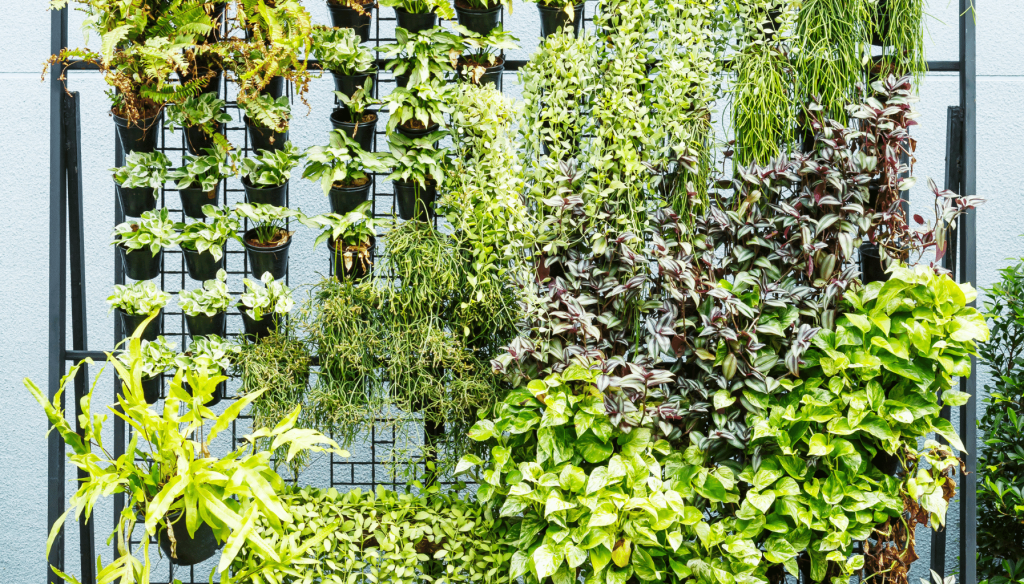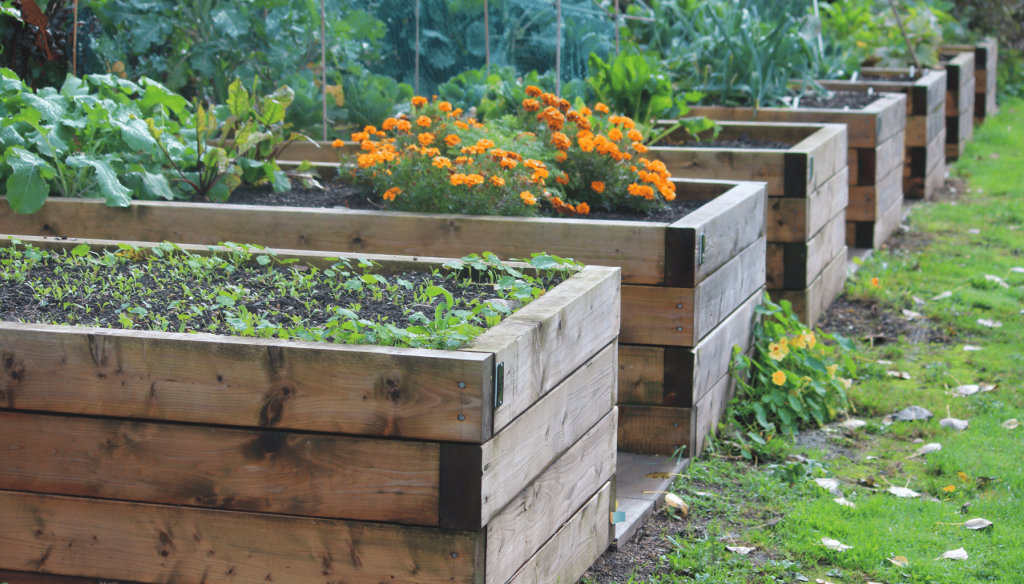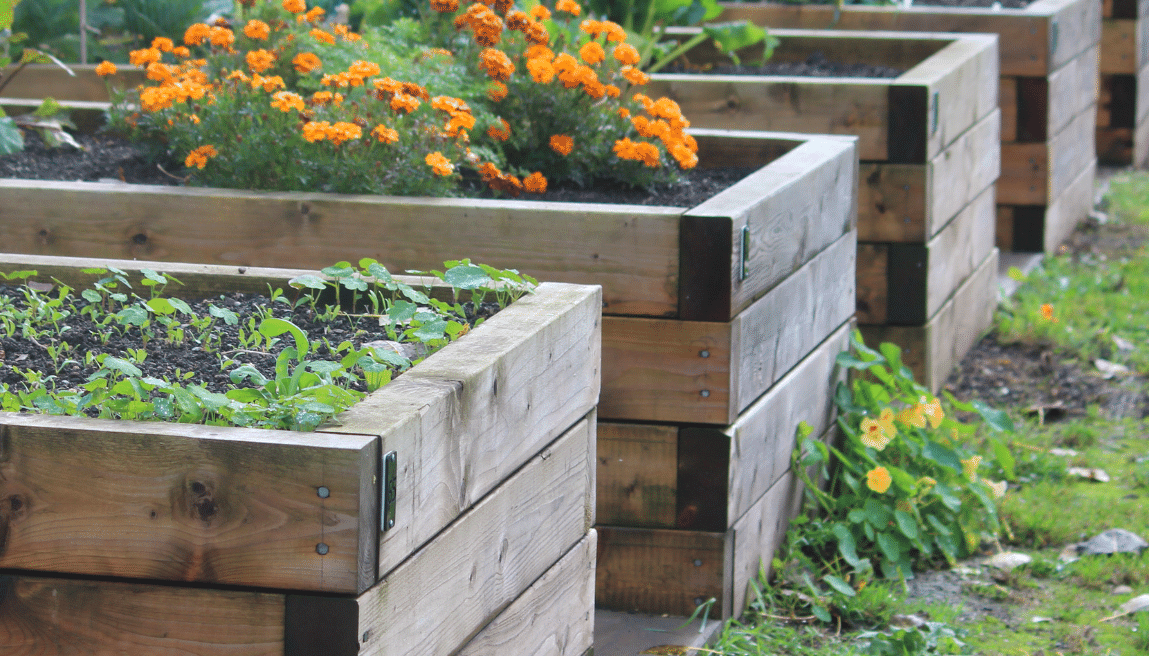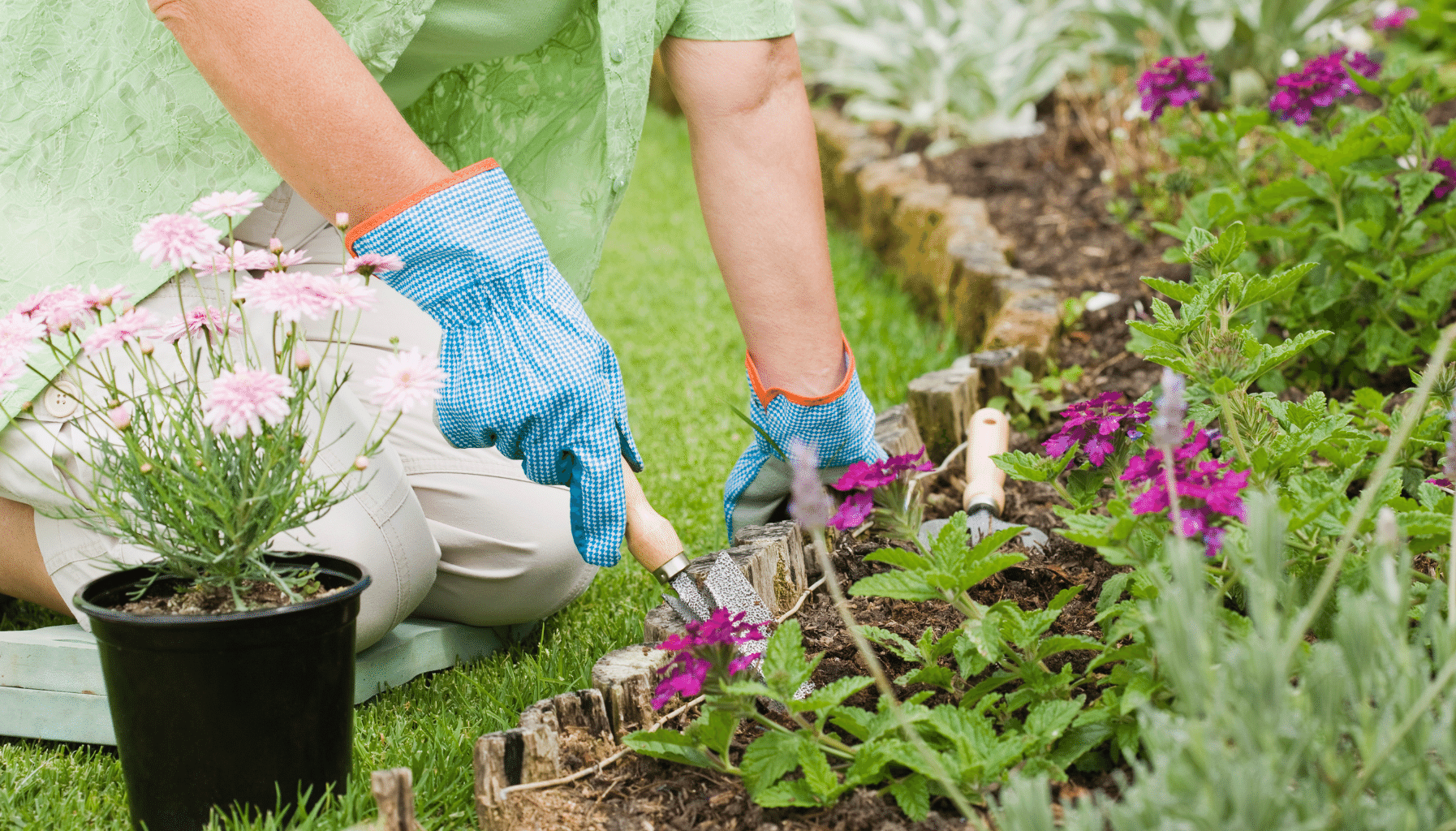
Innovative gardeners understand the benefits of vertical gardening in their raised bed planting strategies. Utilizing the area above the ground can effectively expand their gardening space and increase their overall produce yield.
This method involves growing plants upwards instead of outwards within your raised garden bed, allowing a diverse range of vegetables to thrive in a limited space.
Vertical planting is especially advantageous for those working with smaller or confined areas, enabling them to cultivate various crops efficiently.
So, what are the secrets to enhancing your garden bed space through vertical planting methods? Let’s delve into the strategies for maximizing your raised bed garden space.
Boost Your Garden Space With Vertical Planting
Vertical gardening presents an innovative approach to maximizing your garden space and enhancing its aesthetic appeal. You can cultivate various plants within a confined area by utilizing vertical structures, effectively using every inch of your outdoor space.
You can create a verdant and fruitful vertical garden that will captivate your visual senses and culinary desires through strategic techniques and plant selection.
One of the primary advantages of vertical planting is the ability to make the most of your available space.
Instead of conventional garden beds that occupy horizontal space, vertical gardens enable you to grow plants upwards, conserving precious yard space. This feature is particularly advantageous for compact yards or urban settings where space is scarce.
In addition to space optimization, vertical gardening facilitates convenient access to your plants for essential tasks such as watering, pruning, and harvesting. You can maximize your harvest in a raised bed garden by arranging plants in rows or tiers.

Secrets To Maximizing Raised Bed Efficiency
Maximizing efficiency in your raised bed garden can be achieved through various techniques and strategies. One effective method involves utilizing companion planting to maximize limited space.
Pairing compatible plants together, such as planting radishes with squash, can optimize your garden’s productivity and organization.
Another valuable technique is incorporating vertical gardening methods to increase yield.
Using trellises for plants like peas and lettuce, you can grow upwards instead of outwards, saving space and promoting better organization in your garden.
Succession planting is also helpful in extending the growing season and ensuring a continuous harvest in your raised bed garden.
Sowing seeds at different times can keep your garden producing for extended periods. Implementing square-foot gardening methods can help efficiently allocate space in your garden, allowing you to grow various vegetables closer together.
Maximizing Efficiency in Raised Bed Gardening
- Companion planting can optimize garden productivity and organization by pairing compatible plants together.
- Vertical gardening methods, such as trellises, can increase yield by growing upwards and saving space.
- Succession planting extends the growing season and ensures a continuous harvest in raised bed gardens.
- Square foot gardening allows for efficient space allocation, enabling the growth of various vegetables closer together.
Grow More Vegetables In Less Space
Increasing vegetable yields in limited garden space requires thoughtful planning and strategic planting methods. One practical approach is to utilize raised garden beds to optimize the available area for growing vegetables and herbs.
These raised beds provide a controlled environment for plants to flourish, allowing for precise plant spacing and garden design.
By incorporating companion planting and intercropping techniques, gardeners can enhance space utilization within their raised bed gardens.
With the proper care and maintenance and following spacing recommendations, growing vegetables in raised beds can lead to a plentiful harvest in a small garden space.
Enhance Your Garden Design With Raised Beds
Raised beds provide an innovative solution for transforming your garden landscape, offering practical benefits and an aesthetic boost. In a small backyard or restricted area, these raised plots can help maximize garden space and optimize the space available for planting.
You can create a nutrient-rich environment that promotes optimal plant growth by carefully selecting the right raised bed soil.
The controlled row spacing in raised beds allows for better air circulation and reduces overcrowding risk, leading to healthier and more vibrant plants.
Embracing gardening in raised beds enhances the visual appeal of your outdoor space. It also extends your growing season, catering to various crops such as Swiss chard, which thrive in cooler temperatures.
Benefits of Raised Beds in Gardening
- Maximizes garden space in small backyards or restricted areas
- Promotes optimal plant growth by selecting the right raised bed soil
- It allows for better air circulation and reduces overcrowding for healthier plants
- Extends growing season for a variety of crops that thrive in cooler temperatures
Tips For Successful Plant Spacing
Plant spacing plays a vital role in the overall success of your garden. It can significantly influence the health and productivity of your plants, impacting their growth and yield potential.
Ensuring proper spacing is essential for creating an environment that fosters healthy development and maximizes production.
Whether filling your raised bed with various vegetables or planning a vegetable garden layout, understanding the significance of plant spacing is crucial.
Adequate spacing allows for optimal airflow, sunlight, and nutrient absorption, which is vital for plant growth. In addition, it helps prevent overcrowding, reduces competition for resources, and minimizes the spread of diseases among your plants.
By incorporating these principles of plant spacing into your gardening practices, you can set yourself up for a successful and bountiful harvest.
Utilizing Succession Planting For A Bountiful Harvest
Regarding gardening, succession planting revolves around strategically scheduling and planting crops at various intervals to ensure a consistent yield throughout the growing season. This method optimizes the utilization of available space and prolongs the productivity of your garden.
By spacing out plantings, you can maximize the number of plants in your garden while guaranteeing a steady stream of fresh produce.
Effective planning, crop selection, and proper plant care play crucial roles in the success of succession planting.
By managing spacing, timing, and maintenance, you can cultivate a flourishing garden that produces abundant fresh fruits and vegetables throughout the year.
The Benefits Of Growing Vertically In Raised Beds
Vertical gardening entails growing plants upwards rather than spreading them out on the ground. This innovative method offers many advantages, mainly when utilized in raised beds.
Raised beds foster improved air circulation around local garden plants, reducing the likelihood of diseases.
The heightened structure is a deterrent to pests, making it more challenging for them to access bush beans.
This approach optimizes limited space, making it perfect for small yards or urban settings. With proper drainage and easy maintenance, vertical gardening in raised beds allows for a diverse selection of vegetables, herbs, and flowers to grow.
Attracting Pollinators To Your Vegetable Garden
To boost pollination in your garden, it’s essential to recognize pollinators’ significant impact on the process. Creating an environment welcoming to these vital insects involves carefully selecting plants that will attract them and providing suitable nesting areas for them to flourish.
Incorporating water sources can be another effective method to draw pollinators into your garden.
Companion planting can increase pollination by attracting beneficial insects to your garden.
By incorporating these tactics, you can significantly improve your garden’s yield and enjoy a plentiful harvest of healthy vegetables and flowers. Visit our website for more tips on maximizing pollination in your garden.
| Importance of Pollinators | Creating a Pollinator-Friendly Garden |
|---|---|
| Recognize the significant impact of pollinators | Carefully select plants that attract pollinators |
| Provide suitable nesting areas for pollinators | Incorporate water sources to draw in pollinators |
| Practice companion planting to increase pollination | Improve garden yield and enjoy a plentiful harvest |
Vibrant Front Yard Flower Bed Designs Top 10 Unique And Colorful Ideas
7 Enchanting Raised Garden Bed Ideas For Small Spaces



